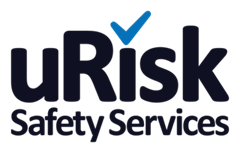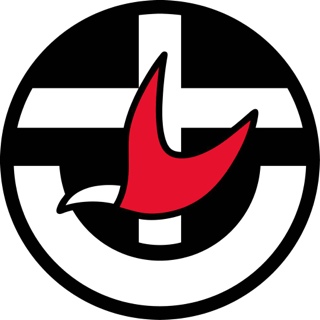Title Page
-
Audit Title
-
Client / Site
-
Conducted on
-
Prepared by
-
Location
Part 1
-
INSTRUCTIONS:
1. Select if Acceptable, Needs Attention or N/A
2. Add Media, Notes and Actions by clicking on the paper clip icon on the upper right corner of the question.
A. Personal Protective Equipment
-
Based on the hazard assessment completed at the Plant, the following are being used as required for each specific job:
-
1. Hard Hats for protection from falling objects
-
2. Proper gloves for the type of work being Performed
-
3. Proper foot wear
-
4. Proper Eye protection
-
5. High Visibility Safety Vest
-
6. Proper Hearing Protection (if required)
-
7. There is an adequate supply of new/replacement PPE
B. Housekeeping
-
1. Floors clean, dry, free of defects, spills/puddles
-
2. Permanent aisles are clearly marked and clear of material
-
3. Stairs are clear of debris and in good repair
-
4. Permanent ladders are firmly attached and in good condition (cages in good repair)
-
5. Supply storage areas are neat and orderly
-
6. All doors function and lock properly
-
7. Line sorter stations are kept clear of material/debris
-
8. All exits and way of exits access are kept clear of debris
-
9. Cleaning supplies are readily available
-
10. Propane tanks are stored properly, secured and away from ignition sources.
-
11. Ladders stored properly when not in use & in good repair
-
12. Electrical panels kept closed and free of dirt and debris
-
13. Compressed air used for cleaning is reduced to less than 30 p.s.i. and with effective chip guarding and proper PPE
-
14. Bales Stacked Safely. (4) Bales maximum
Part 2
C. Conveyors, Balers, Compactors, Etc.
-
1. Balers, Conveyors, and Compactors are properly guarded at points where personnel could be pinched, caught, or otherwise injured when within 7 feet of floor or working surface.
-
2. Guards are properly affixed to the equipment.
-
Does the guard create a hazard in itself?
-
3. Machines in fixed locations are securely anchored and kept clean and properly maintained.
-
4. When special tools or equipment are used for placing or removing material, they protect the operator’s hands.
-
5. Conveyors, balers, compactors, and other equipment are capable of being locked out for servicing or repair.
D. Powered Industrial Trucks / Wheel Loaders
-
1. All nameplates and markings, including capacity, are in place and legible on all powered industrial trucks.
-
2. Equipment is kept in a clean condition, free of lint, excess oil and grease.
-
3. The horn and the reverse signal alarm are audible above the surrounding noise level.
-
4. Directional lighting, where appropriate, is provided on each piece of equipment.
-
5. Each piece of equipment has a battery disconnect, fire extinguisher, and seat belts.
-
6. Industrial trucks are driven by authorized personnel only.
-
7. Documented inspections are conducted at the beginning of each shift to identify any items in need of repair.
-
8. Equipment found to be in need of repair, defective, or in any way unsafe is taken out of service until properly repaired.
-
9. Truck brakes are set and wheel chocks placed under the rear wheels to prevent the movement of trucks, trailers, or railroad cars while loading or unloading.
-
10. Fixed jacks are used to support a semi trailer during loading and unloading when the trailer is not coupled to a tractor.<br>Glad-hand Locks must be installed prior to loading or unloading with a forklift.
-
11. Positive protection is used to prevent rail cars from being moved when dock boards or bridge plates are in position.
-
12. Fuel storage and handling areas are clean, free from combustibles, cigarette butts and other ignition sources.
E. Electrical Safety
-
1. Permanent wiring, boxes, switches, outlets, and lights are secure and free from defects. Permanent wiring abandoned in place is tagged or otherwise identified.
-
2. Each disconnect is legibly marked to indicate its purpose.
-
3. Clear working space in front of electrical panels/breaker boxes are maintained at no less than 36 inches deep and 30 inches wide.
-
4. Wiring for extension cords, portable lights, and tools are free of cuts, kinks, wear – used properly and plugs intact.
-
5. Ground pins on electrical cords are in place, functional.
-
6. Temporary wiring (extension cords) is NOT used in place of permanent wiring. If extension cords are TEMPORARILY being used, they should be in good condition and without splices, deterioration or damage.
-
7. Lighting is sufficient for all working areas and around service equipment, switchboards, and panel-boards.
-
8. All live parts of electrical equipment operating at 50 volts or more are guarded against accidental contact.
-
9. Unused openings in cabinets, fittings, and boxes are effectively closed.
-
10. Electrical circuit breakers are identified and labeled.
Part 3
F. Machines, Equipment, and Tools
-
1. Electrical equipment is protected by ground or double insulation.
-
2. Machines are guarded at point of operation.
-
3. Appropriate warning signs are posted (and visible) at or near equipment with moving parts, such as balers, conveyors, compressors, compactors, etc.
-
4. Hand tools are in good repair – no burrs, loose/cracked handles, heads not mushroomed.
-
5. Bench grinder has a tool rest adjusted to within 1/8” and a tongue guard adjusted to within ¼” of wheel.
-
6. Portable fans are provided with full guards or screens having openings ½” or less.
-
7. Welder cables, clamps, and guards are in good condition and torch hoses, regulators and valves are equipped with anti-flashback valves.
G. Fire Protection
-
1. Exits are properly marked. ‘No Exits’ are marked. Properly lighted. All signs are clean and visible.
-
2. Exits and aisles leading to exits are visible, clearly marked, kept clean and with a pathway at least 28” wide.
-
3. Portable fire extinguishers are of the proper type and are kept at their designated places at all times. Inspections are current and up to date (accessible, mounted, charged, pinned, sealed and tagged).
-
4. Reels and cabinets for hose systems (if applicable) are conspicuously identified, accessible, maintained and ready for use by authorized individuals.
-
5. “No Smoking” signs are posted in required areas: fuel area, bale storage and operating floor area.
-
6. Combustibles are safely stored away from flames and sparks.
-
7. Flammable liquids are contained in approved safety cans and stored in fire resistant cabinets.
-
8. Minimum vertical clearance between automatic sprinklers and material below is at least 18” (36” for bales). Sprinkler piping and heads are free of paint and debris, unobstructed and free of corrosion.
-
9. Sprinkler systems are in operable condition; with control valves properly locked or sealed in the full open position.
-
10. Sprinkler system is on a regular inspection and maintenance program by qualified MRR LLC staff or outside-qualified contractor. System inspection is current and tags indicating inspections are placed on the valve(s).
-
11. Sprinkler systems contractor’s inspection records are available and maintained on file for at least one year.
-
12. Fire hydrants are accessible, in operable condition and free of leaks and corrosion. Hydrants are flow tested ONCE A YEAR: open hydrant fully until all foreign material has cleared then close SLOWLY.
-
13. Fire detection and suppression systems are in operable condition, and are inspected regularly by outside-qualified contractor. Inspection is current and tag placed on the system.
-
14. Plant Manager and Safety Manager are advised of any work or situation that is likely to result in the impairment of the fire protection system.
-
15. All fire protection systems are currently in service
H. Environmental Protection
-
1. Permit binders / files, regulatory agency correspondence and required postings are up-to-date and readily available for review.
-
2. Inspections are completed and documented as required for facility Spill Prevention Control and Countermeasure plan (SPCC) - if applicable.
-
3. Inspections are completed and documented as required for facility Storm Water Pollution Prevention Plan (SWPPP) - if applicable.
-
4. Spill response procedures are posted and spill remediation equipment/supplies are in designated locations.
-
5. Fuel and oil storage areas are free of leaks and spills. And tanks/drums are appropriately labeled. "Used Oil" containers are marked "Used Oil" and NOT "Waste Oil." Tank database is up-to-date.
-
6. Perimeter of facility secure and there is no recyclables or debris accumulation.
-
7. Unprocessed and processed materials, including residue, are stored as required by permit, and volumes are within permitted levels.
Part 4
I. General Safety
-
1. Rest rooms are clean and sanitary.
-
2. Hand soap, warm water, and hand towels or other means of drying hands are available.
-
4. First Aid supplies are available and maintained. No items are expired.
-
5. Eyewash stations (and safety showers) are clean, operable, and accessible; located within 50’ of a battery storage area.
-
6. All company rules and regulatory postings are up.
-
7. OSHA 300 Log is up to date.
-
8. MSDS binder is up-to-date, prominently posted and readily available to workers.
-
9. DOT accidents are recorded in a DOT Accident Register.
-
10. Overhead doors and controls are in good working order.
-
11. Ventilation system is functioning properly.
-
12. Lighting is adequate inside and outside the building.
-
13. All safety compliance trainings are documented and up-to-date, including Monthly Facility Inspections and Safety Committee meetings
J. Maintenance Area (In addition to items already listed)
-
1. Closed containers provided for soiled rag disposal.
-
2. The rated load capacity on cranes, hoists, slings and jacks is plainly marked.
-
3. Inspections are performed on cranes, hoists, slings or jacks before being used and documented inspections are performed at required intervals.
-
4. Parts washer lid and fusible link are in working order.
-
5. Hot Work Permits are used in designated areas.
-
6. Compressed gas cylinders are properly marked, secured, and capped when not in use. Oxygen and fuel cylinders separated by 20’ or a 5’ high fire resistant wall.
-
7. Petroleum products protected by secondary containment.
-
8. Hazardous Material Storage – cabinet(s) are properly labeled and spill protection and/or spill absorbents are nearby.
Signature
-
Enter Full Name and Signature










